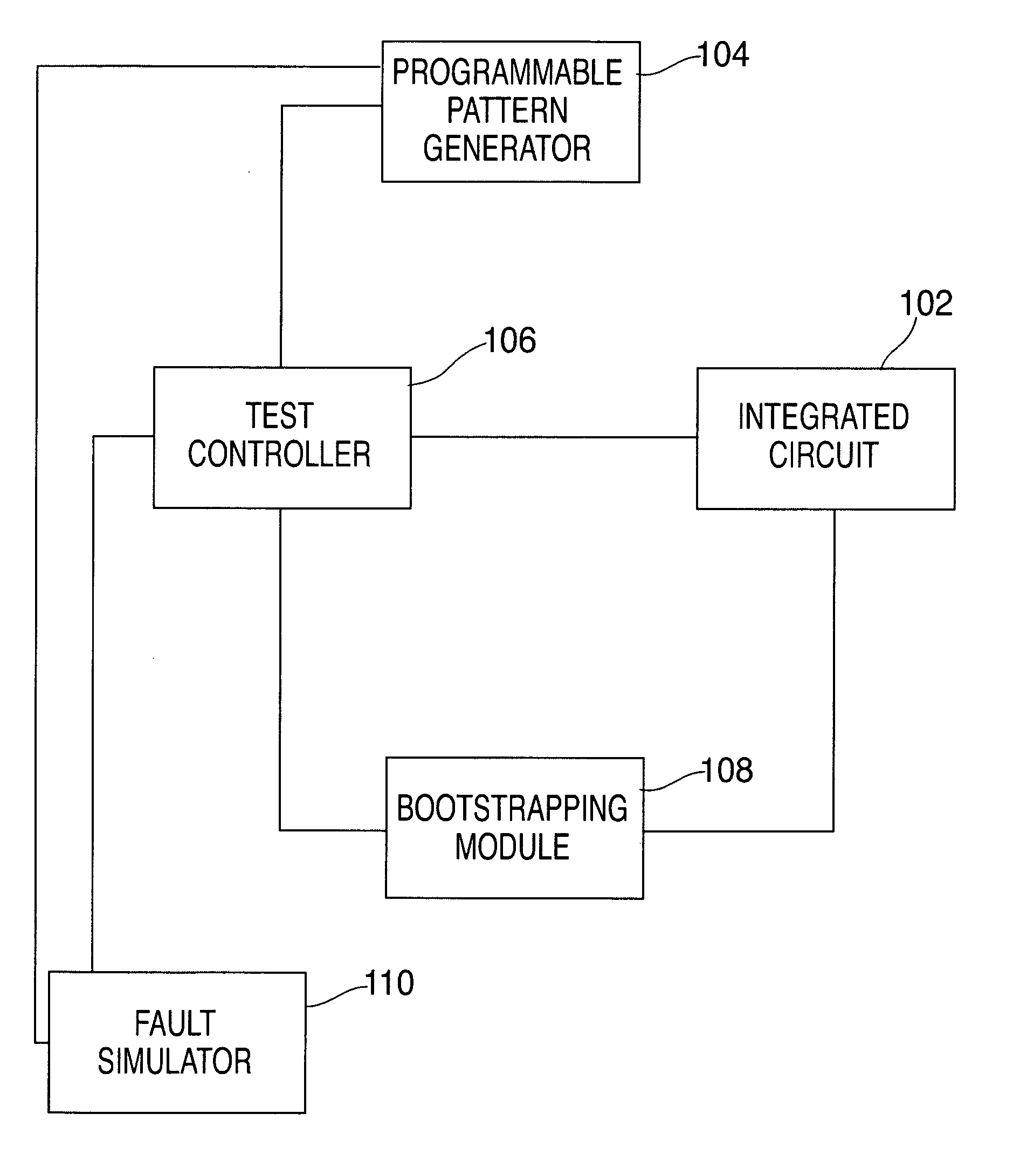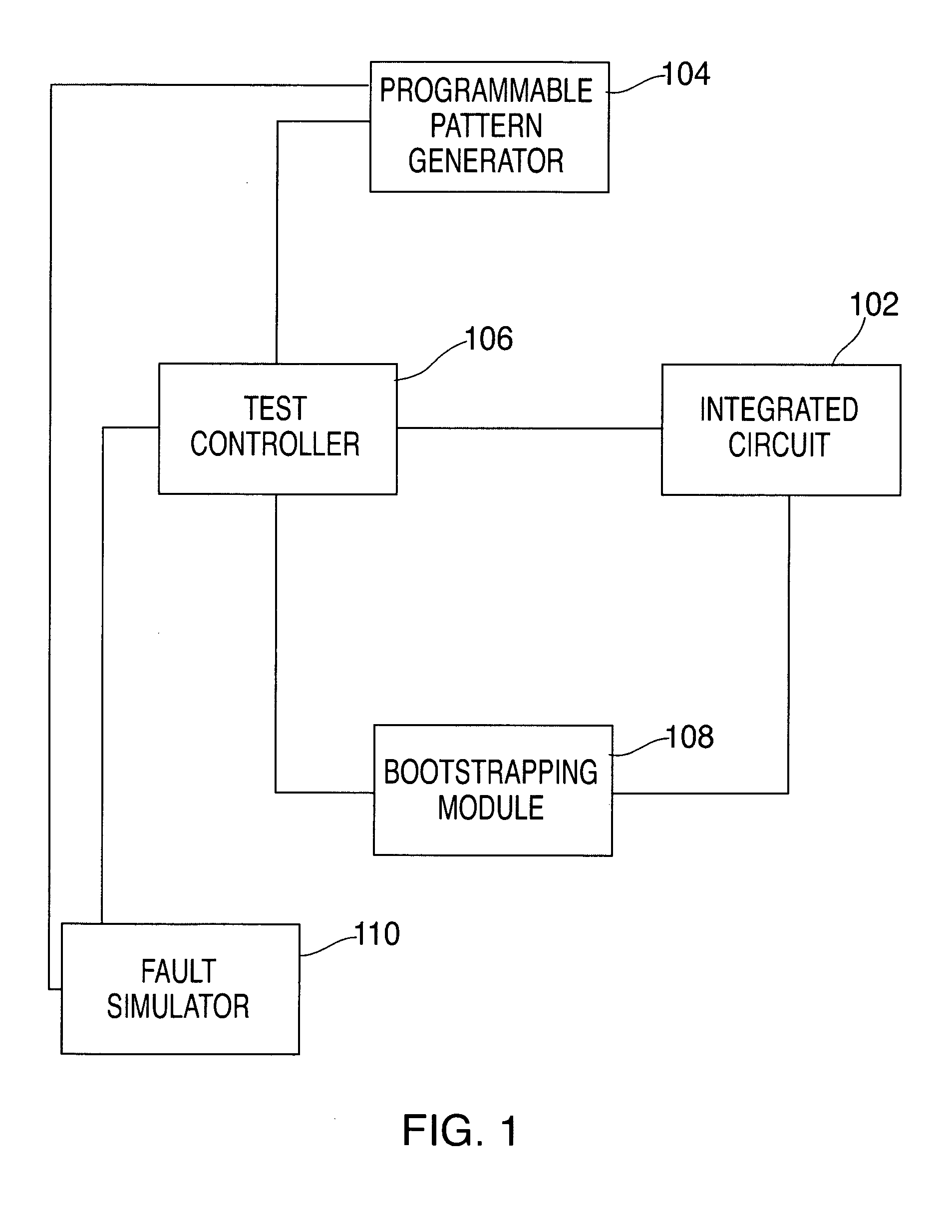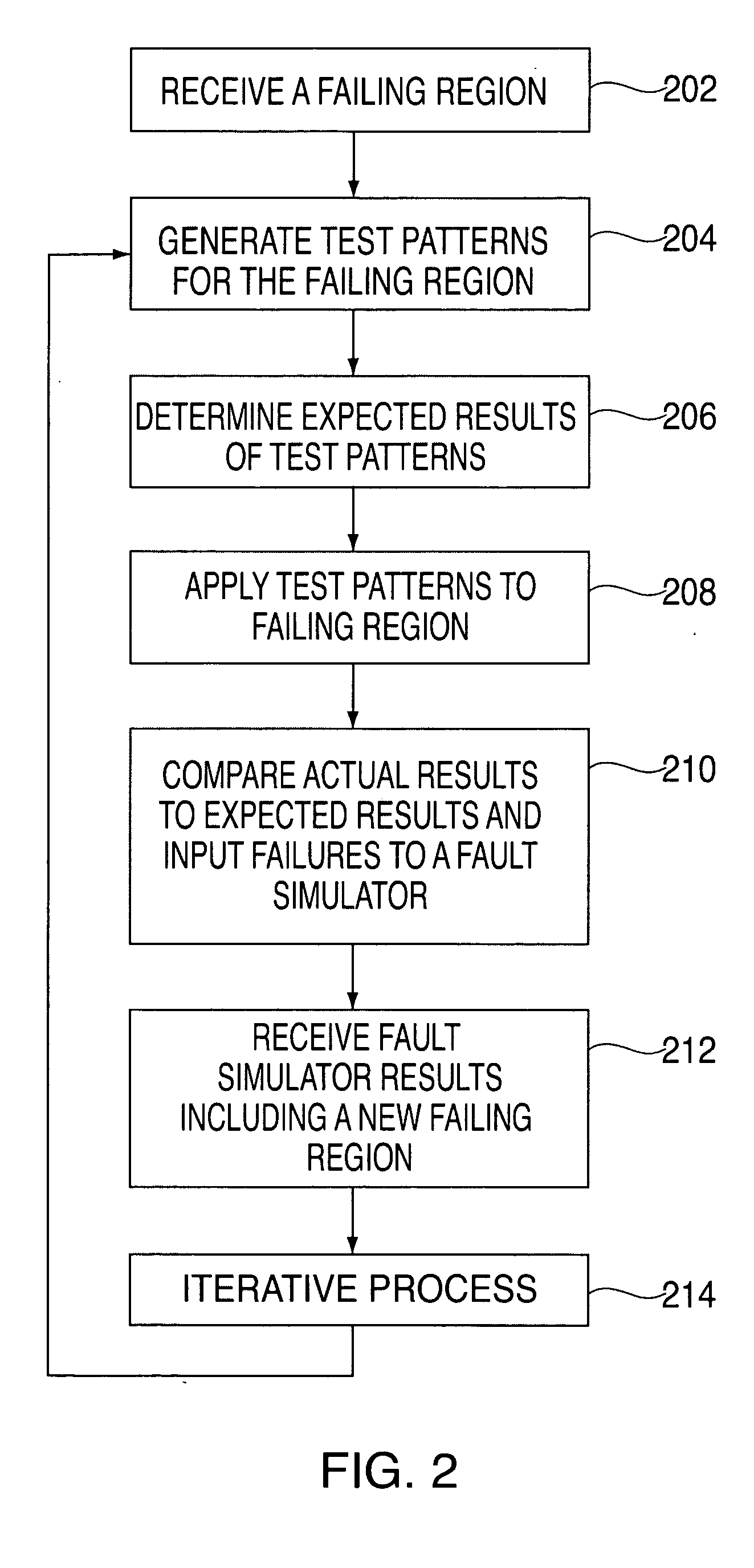Method and system for providing interactive testing of integrated circuits
a technology of integrated circuits and interactive testing, applied in the field of testing integrated circuits, can solve the problems of large, insufficient and ineffective diagnostic pattern sets, complex semiconductor process intensification, and new types of defects introduced by the time, and the fault simulators are typically imper
- Summary
- Abstract
- Description
- Claims
- Application Information
AI Technical Summary
Benefits of technology
Problems solved by technology
Method used
Image
Examples
Embodiment Construction
[0015] An exemplary embodiment of the present invention includes a novel test, characterization and diagnostic method applicable to logic designs. It addresses the problems of fault isolation and diagnostic resolution by providing an adaptive test algorithm and a tester interactive pattern generator method in conjunction with on-the-fly bootstrapping techniques. The test and diagnostic method is used to identify defects and pattern sensitivities within a specific logic partition. This is accomplished by applying a pre-determined set of patterns to the logic in both an operating region and a failing region. The bootstrapped results from the operating region are compared to the results in the failing region to determine if the pattern passes or fails. In alternate exemplary embodiments, the basic concept is further extended to encompass interactively simulated patterns to optimize the diagnostic convergence process. Also, in situations where a “passing” operation region is not readily...
PUM
 Login to View More
Login to View More Abstract
Description
Claims
Application Information
 Login to View More
Login to View More - R&D
- Intellectual Property
- Life Sciences
- Materials
- Tech Scout
- Unparalleled Data Quality
- Higher Quality Content
- 60% Fewer Hallucinations
Browse by: Latest US Patents, China's latest patents, Technical Efficacy Thesaurus, Application Domain, Technology Topic, Popular Technical Reports.
© 2025 PatSnap. All rights reserved.Legal|Privacy policy|Modern Slavery Act Transparency Statement|Sitemap|About US| Contact US: help@patsnap.com



